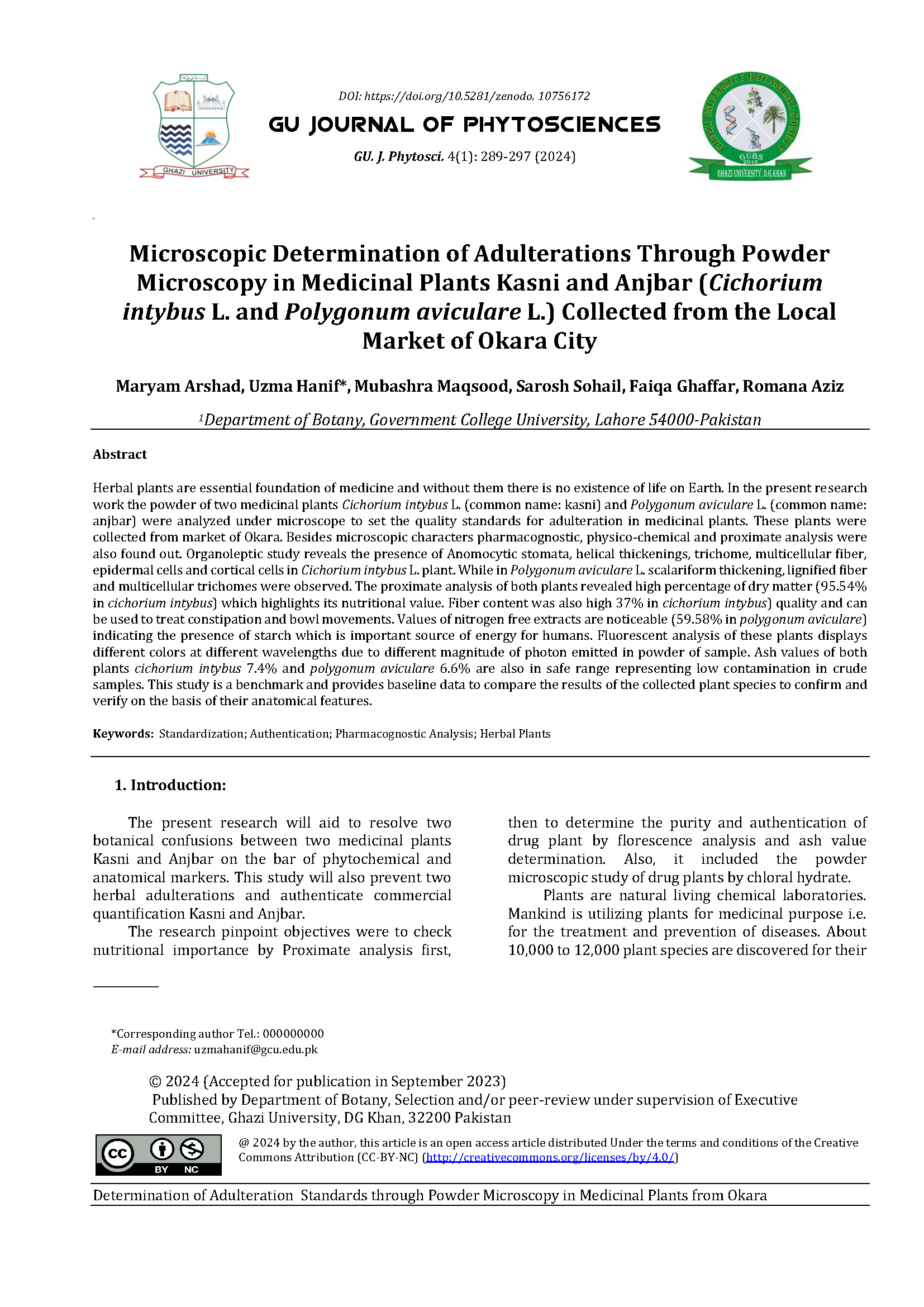Microscopic Determination of Adulterations Through Powder Microscopy in Medicinal Plants Kasni and Anjbar (Cichorium intybus L. and Polygonum aviculare L.) Collected from the Local Market of Okara City
Keywords:
Standardization, Authentication, Pharmacognostic Analysis, Herbal PlantsAbstract
Herbal plants are essential foundation of medicine and without them there is no existence of life on Earth. In the present research work the powder of two medicinal plants Cichorium intybus L. (common name: kasni) and Polygonum aviculare L. (common name: anjbar) were analyzed under microscope to set the quality standards for adulteration in medicinal plants. These plants were collected from market of Okara. Besides microscopic characters pharmacognostic, physico-chemical and proximate analysis were also found out. Organoleptic study reveals the presence of Anomocytic stomata, helical thickenings, trichome, multicellular fiber, epidermal cells and cortical cells in Cichorium intybus L. plant. While in Polygonum aviculare L. scalariform thickening, lignified fiber and multicellular trichomes were observed. The proximate analysis of both plants revealed high percentage of dry matter (95.54% in cichorium intybus) which highlights its nutritional value. Fiber content was also high 37% in cichorium intybus) quality and can be used to treat constipation and bowl movements. Values of nitrogen free extracts are noticeable (59.58% in polygonum aviculare) indicating the presence of starch which is important source of energy for humans. Fluorescent analysis of these plants displays different colors at different wavelengths due to different magnitude of photon emitted in powder of sample. Ash values of both plants cichorium intybus 7.4% and polygonum aviculare 6.6% are also in safe range representing low contamination in crude samples. This study is a benchmark and provides baseline data to compare the results of the collected plant species to confirm and verify on the basis of their anatomical features.

Downloads
Published
How to Cite
Issue
Section
License
Copyright (c) 2024 Authors

This work is licensed under a Creative Commons Attribution-NonCommercial 4.0 International License.
All works published by the GU Journal of Phytosciences are freely available to copy, distribute, transmit, and adapt the work provided the original work and source are appropriately cited under a CC BY-NC 4.0 International License. The CC BY-NC licence allows for maximum re-use of open-access materials, and the author has full copyright over their publication. Under this license, users are free to share (copy, distribute, and transmit) and adapt for any purpose, but not for any commercial use (read full legal code).
Under Creative Commons, authors retain copyright in their articles.




